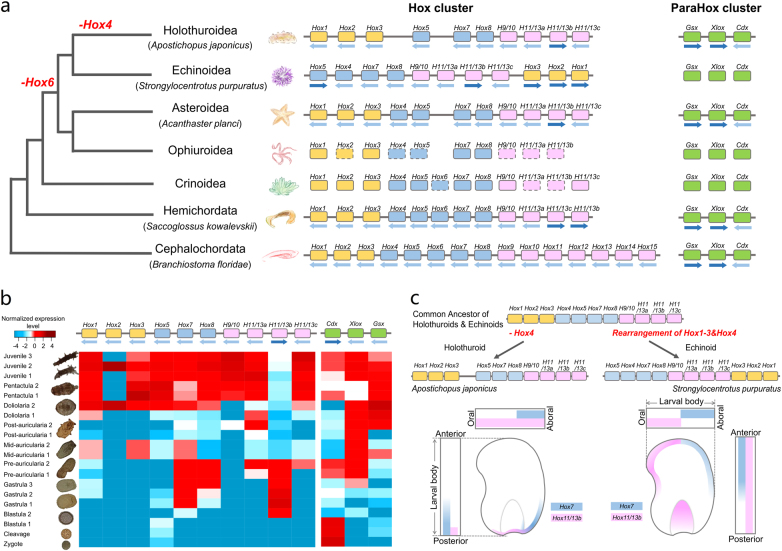Fig. 2. The cluster organization and tempo-spatial expression of Hox genes during the development of A. japonicus.
a Cluster organization of the Hox and ParaHox genes of the sea cucumber A. japonicus and other echinoderms37,41,112. The sea cucumber has a typical Hox cluster similar to that of the sea star A. planci, invalidating the previous hypothesis that Hox clusters of all echinoderms are reorganized39,40. The genes whose identity existed ambiguously are shown with rectangles in dashed lines. b Temporal expression of the sea cucumber Hox and ParaHox cluster genes. Contrary to their ParaHox counterpart, expression of the sea cucumber Hox cluster during development does not exhibit temporal colinearity as typically found in chordate Hox clusters. Compared with other Hox genes, Hox7 and Hox11/13b show prominent expression during gastrulation, likely participating in determination of the larval body plan. c Inferred Hox cluster evolution and spatial expression of Hox7 and Hox11/13b in sea cucumber and sea urchins. Presumably the common ancestor of holothuroids and echinoids contained a typical Hox cluster without Hox6, which is largely preserved in the sea cucumber lineage (except the loss of Hox4) but had undergone a few rearrangements in the sea urchin lineage. The spatial expression of Hox7 and Hox11/13b shows colinearity during gastrulationalong the anterior/posterior (A/P) axis for the sea cucumber A. japonicus45 and along the oral/aboral (O/A) axis for sea urchins46–48. This finding probably suggests the important roles of the two Hox genes in guiding axial transformation from the embryonic to larval stage in echinozoans

